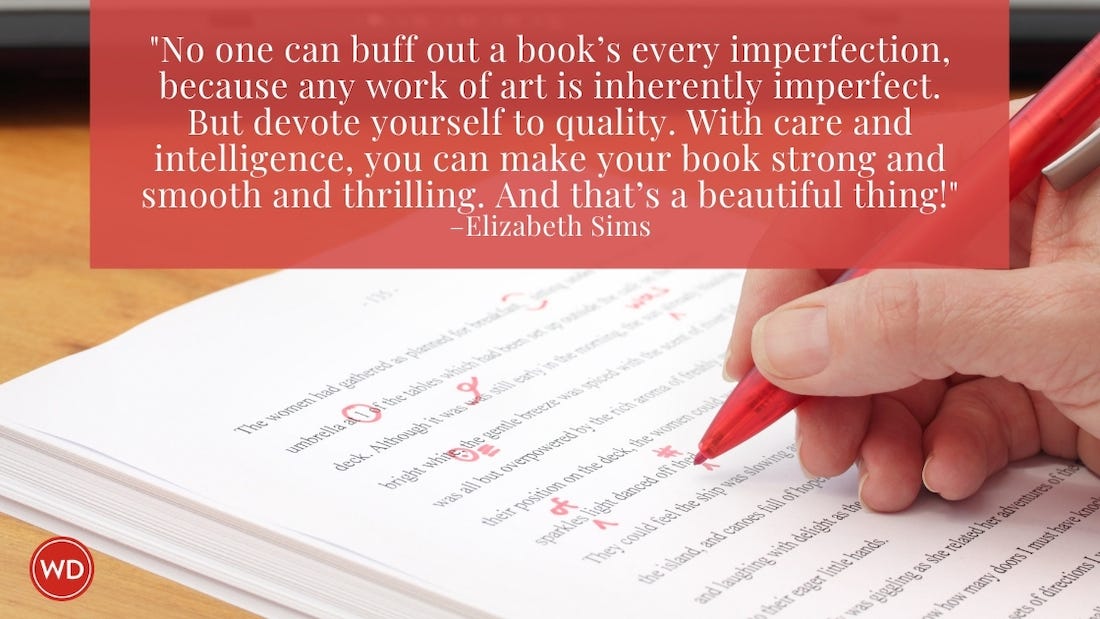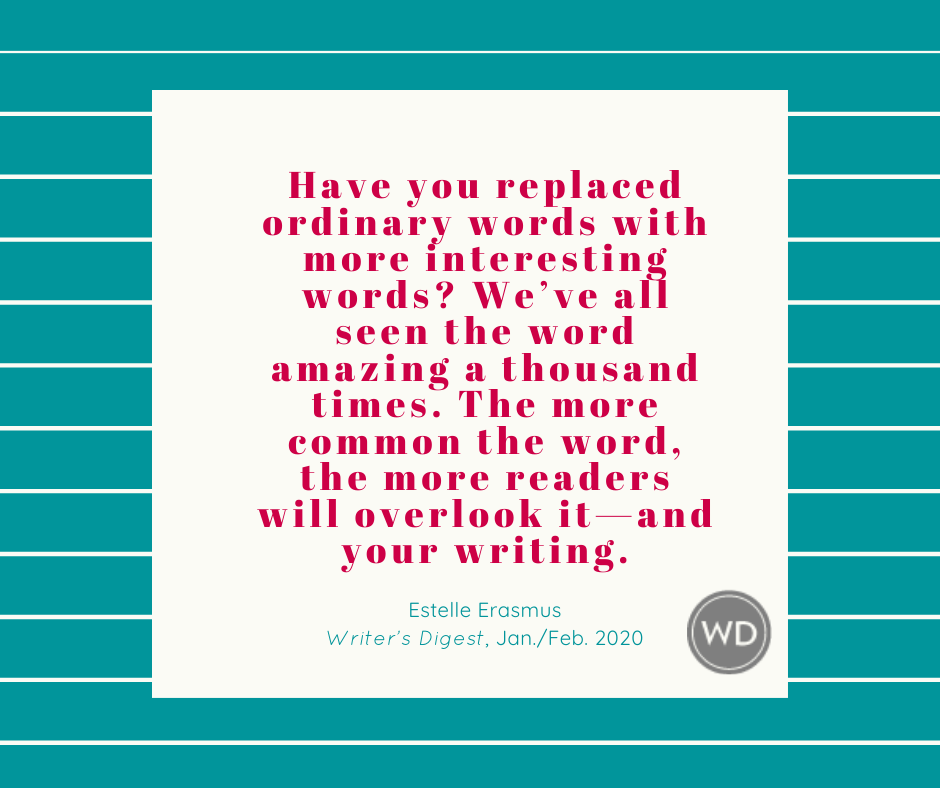7 Ways to Perfect Your Writing “Tone”
Often when we feel something is missing from a piece of writing, the key lies in examining the tone. Here’s how to revise your work so that it resonates.
Do you obsess about the tone of your writing as you revise? You should. Tone is one of the most overlooked elements of writing. It can create interest, or kill it.
It’s no wonder that so many of the countless conversations I’ve had with writing students and colleagues have been about problems related to tone. A friend submitting a novel says the editors “don’t like the main character.” A nonfiction book on balancing a family and a career skirts the edge of whining. An agent turns down a query because she feels “too much distance from the heart of the story.” I scan the latest work of a journalist friend who’s coming to dinner and find it meticulously sourced and well written, but grim in outlook.
And of course any publication you want to write for will have its own tone, which it would be smart for you to try to match. Notice how quietly all New Yorker profile pieces begin, while Utne Reader favors unconventional and unexpected viewpoints that challenge the status quo.
What exactly do I mean by tone? That’s a good question, as there are many terms—mood, style, voice, cadence, inflection—used to mean much the same thing. For now let’s agree that tone is the author’s attitude toward his subject: grave, amused, scientific, intimate, aggrieved, authoritative, whatever.
If you were a photographer, tone would be the way you light your subject. For dramatic shadows, lit from the side. For a scary effect, from above. For romance, lit with candles. In a movie, tone is often conveyed with music—think of the ominous score accompanying the girl swimming in shark-infested waters in Jaws.
A writer doesn’t have a soundtrack or a strobe light to build the effect she wants. She has conflict, surprise, imagery, details, the words she chooses, and the way she arranges them in sentences. Like the tone you use when you talk to somebody, tone in writing determines how a reader responds. If the piece sounds angry, he gets nervous. If it’s wry and knowing, he settles in for an enjoyable read. If it’s dull, he leaves it on the train, half read.
Thus, the wrong tone can derail an otherwise good piece. I’m surprised how seldom writing students note this during our workshop discussions, as if it’s impolite to admit that they’re made uncomfortable by how much the narrator seems to hate her mother, or to say that their thoughts drifted elsewhere by the second page of the overly abstract piece about mindfulness in the workplace.
You can detect tone problems in your own work simply by noting where your attention wanders as you reread it. Or, better, by reading it aloud. When you’re ready to revise a piece, try reading it to someone else, or asking someone to read it to you. You won’t have to search for awkward or boring or whiny parts—you’ll hear them.
Some problems with tone are small and can be easily fixed during revision. Others might require a new approach to the piece as a whole. Let’s look at a few of the easiest and most effective ways to improve the tone of your writing.
1. Avoid a Predictable Treatment of Your Subject.
In the first draft, you write what people expect you to write—what you expect yourself to write. “I wanted a car.” The tone becomes predictable. Now, during your revision, go deeper. Seek out the harder truths. It’s in the second, third, fourth draft that you say something we don’t expect you to say, something even you didn’t expect you to say. When you get tired of being nice. “I wanted a car so I could drive out of my marriage.” Surprise yourself, and you will surprise your reader.
Similarly, you’ll want to avoid taking an overly emotional approach to an overly emotional subject. Think of the dry, reserved tone in which Joan Didion recalls the anguish of losing her husband in The Year of Magical Thinking. What if she had wailed about her loss? There would be nothing for us readers to do, even if the emotions being reported to us were very sad. (Note: If you’re having a hard time distancing yourself from the raw emotion of a personal subject, this may be a sign that you need to let time do its magic work. Frank McCourt said it took him years before he could detach from his anger toward his feckless father enough to give Angela’s Ashes its nonjudgmental tone. When something bad happens, of course we feel upset, even as if life has treated us unfairly—but that’s not a great place to write from. Let the experience ripen in your memory until you’ve achieved the distance you need.)
If your subject is inherently serious, try taking a lighter approach. What’s Your Poo Telling You? came to Chronicle Books as a serious examination of—well, you know. In that form, it might have sold a few thousand copies. The lighter treatment led to sales of hundreds of thousands of copies. There’s no denying that titles with tone sell books: Consider My Miserable, Lonely Lesbian Pregnancy, or Skinny Bitch.
2. Keep Tone Consistent From Start to Finish.
Make sure your very first sentence establishes the tone you want. Look at the opening line of “The Lesson” by Toni Cade Bambara:
Back in the days when everyone was old and stupid or young and foolish and me and Sugar were the only ones just right, this lady moved on our block with nappy hair and proper speech and no makeup.
In one sentence, you know who everybody is. Not only do you want to read on, but you want to know what else she’s written so you can get that, too.
You will choose different tones for different subjects, of course, just as you would dress differently for a date than for an interview. But stay away from changing tones within a piece. One minute you’re riffing comically on Uncle Frank’s parade of girlfriends, and the next, the reader is caught chortling when you shift to Uncle Frank’s abuse of his daughter. Or the thriller shifts from a slumped body in an alley to the detective’s girlfriend shopping for bridal gowns, and suddenly we’re in a romance. (Notice, by the way, how many genres actually have tone in their names: thriller, romance, mystery, horror. …)
Read your work looking for places where the tone fades or shifts. Focus your revision there.
3. Cut Ruthlessly.
If you reread a piece and decide that nothing works until the second page, why not simply start it there?
The delete key is your friend. The novelist Carolyn Chute told Writers Ask: “I write a lot of junk. On and on and on, all this junk. But every now and then this dramatic moment happens, so I lift that out and put that aside. And then I write all this junk: They’re brushing their teeth, they’re sitting there, they’re looking around—you know. Then something will happen and I’ll pull that out. Because those are the only strong things.”
Read your work looking for places where your engagement wanes. Boring is bad. Careful is right next to it. When it comes to tone, don’t try to fix the boring parts—toss them. You can’t fix boring.
Other places where the delete key comes in handy:
Off-topic tangents. You know how it goes: You start out writing about the president’s pooch, and by the home stretch you’re discoursing disdainfully on the state of our economy and what a boob the president is—as if people are lining up to hear your thoughts on that. Stick to the subject at hand.
Overemphasis on themes. Writing fiction? Don’t hit readers over the head with your own interpretation of the meaning of it all. You provide the right detail—say the wooden coffin—and they’ll supply the mortality of man. Resist the urge to overtly explain—it can come off as condescending or redundant.
4. Let Tension Sustain Tone.
Your piece, whatever it is, should be rife with conflict. It’s not enough to write an essay about how much you like to spend the day in bed. If nothing is stopping you from lazing around under the sheets, then you have no problem, and thus the piece has no tension—an essential element in sustaining any tone for the long haul. If you find you’ve committed this mistake, whether in a fictional story or a true one, bring in someone with the opposite point of view (mothers are always good for this!). That’s why columnists so often reference their mates—to be the foil, the reasonable one, so the author isn’t ranting in a vacuum.
5. Use Your Voice.
Are you one of the many writers who blog? Unless you know tomorrow’s stock prices or are telling readers how to relight a furnace on a freezing day, it will be your voice, not the content, that draws them in. So you must sound like somebody. This is true with other forms of personal writing, as well. Resist the urge to come off as uncomplicated, reasonable, or polite. If you’re expressing opinions, express them! (Note that this is a format where opinion is the point, not a tiresome add-on.) Don’t say that whether or not someone likes a particular film “seems to me a matter of sensibility and perspective.” We know that! Be in a mood. Take a position. “Anyone who doesn’t like The Ruling Class should be cast into hell for all eternity.” Look for opportunities to bring a human voice into your work. There’s more sense of someone behind the words “I had a breast cut off” (Molly Ivins) than “I had a mastectomy.”
6. Convey Tone Through Details and Descriptions.
Consider the difference between “in October” and “under an October sky.” A description of scenery, however luscious, can tire the reader if that’s all it is. Use the imagery to show us your character’s mood: A sad character will notice rotting houses and untended yards; a contented one will see picturesque shacks and gardens in a profuse state of nature.
When adding details to enrich your writing, tone comes from being as specific as possible. Change “My husband committed suicide” to “My husband gassed himself in our Passat in the Austrian Alps.”
I once taught a travel-writing class aboard a cruise up the Amazon, and sent passengers ashore to a remote village with notebooks. One student, surprised and amused by the satellite dishes towering over the small huts, dubbed them “the flowers of the Amazon” in her resulting piece. Another, having overheard the song “The Air That I Breathe” on an antiquated village speaker, wrote, “The fact is you can hear the whole planet breathing while you’re here. As one Brazilian told me, it’s the lung of the world.” Tone in travel writing comes from such acute observations.
In memoir or fiction, it comes also from offbeat character details, like this one from the memoir The Glass Castle by Jeannette Walls:
Dad was so sure a posse of federal investigators was on our trail that he smoked his unfiltered cigarettes from the wrong end. That way, he explained, he burned up the brand name, and if the people who were tracking us looked in his ashtray, they’d find unidentifiable butts instead of Pall Malls that could be traced to him.
The narrator here, it is safe to say, is not admiring the cunning of her father; the tone suggests she is old enough to worry about the folly of her parents.
7. Learn to Recognize Built-in Problems With Tone.
Everybody who’s ever been fired has sat down to write a book about it. But harping on the wrong that’s been done to you can make your readers uneasy. If they were seated next to you on a plane, they’d be desperately longing to change seats. Lawsuits, controversial issues, other people’s behavior, how overwhelmed you were by the flood of wedding gifts, and what a chore it was to write all those thank-you notes: all such topics force you to work hard to overcome the reader’s unease at smelling an agenda, or anger, or bragging.
In these instances, to fix the tone, you have to fix the way you think about a given subject. You have to back off, calm down, see other points of view, maybe even take some responsibility for whatever happened. When writing about such delicate subjects, you must not let a negative tone take over by ascribing motives to people: You just tell what they did, and let the reader read motive into it. You must write with forgiveness, understanding, and humor. In some ways, this can be a payoff to examining your tone as you write: You change the writing, and the writing changes you. But if you find this is not possible with your subject, don’t be afraid to scrap a project that you discover has inherent problems with tone. You’ll be a better writer for it.









